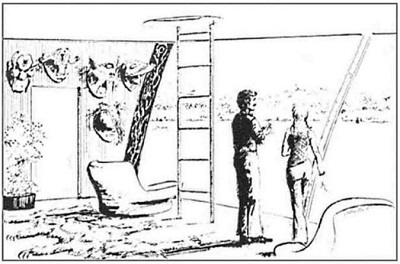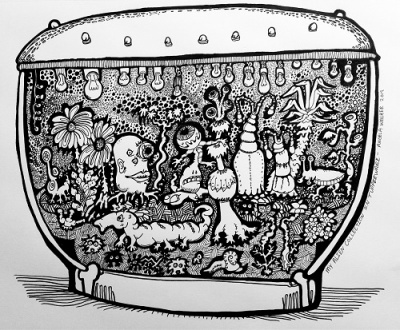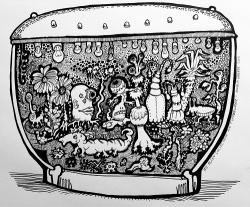Difference between revisions of "Capture Tank"
JMSchattke (talk | contribs) |
|||
| Line 38: | Line 38: | ||
{{Detail}} | {{Detail}} | ||
{{Sources | {{Sources | ||
| − | |S1= {{Ludography cite|name= Safari Ship |page= 23}} | + | |S1= {{Ludography cite|name= Research Station Gamma |page= TBD}} |
| − | | | + | |S2= {{Ludography cite|name= Safari Ship |page= 23}} |
| − | | | + | |S3= {{Ludography cite|name= Deck Plan 2: Modular Cutter|page= All}} |
| − | | | + | |S4= [[Traveller Wiki Editorial Team]] |
| − | | | + | |S5= Author & Contributor: [[Matthew Kerwin]] |
| + | |S6= Author & Contributor: Lord (Marquis) and Master of Sophontology [[Maksim-Smelchak]] of the [[Ministry of Science]] | ||
}} | }} | ||
Revision as of 15:49, 30 August 2019
A Capture Tank is a sort of storage and residential space for a lifeform, usually a non-sophontic creature, that cannot use standard shipboard life support, atmospheric recycling, and other conditions.
- The same device used for captured sophonts is typically called a Holding Tank, Environmental Tank, etc.
- It is a kind of Ship Equipment specialized for hunting and wildlife conservation very often in connection with an Interstellar Safari.
Description (Specifications)
Capture tanks can hold specimens, usually live ones, for transport back to civilized space. Expedition Ships often boast of holding tanks for handling and storage of carcasses or live trophies. Capture tanks can be lit in a variety of different wavelengths in order to reproduce native environments or to enhance observation by the passengers and crew. Each capture tank has an independent environment support mechanism which is capable of maintaining the desired atmosphere, temperature, and pressure for life forms held inside. Standard settings are also available for preservation of dead trophies with a minimum of deterioration.
The capture tank is a cargo compartment specially fitted out for carrying trophies from the hunt. Trophies and captures can be transferred to the main capture tanks through specially fitted doors in the launch and the safari ship.
Image Repository
- Two gentlesophont-hunters in the lounge of an Animal class Safari Ship. Trophies are to their left, and the two on-ship capture tanks are slightly behind the trophy wall.

- A Capture Tank with a selection of alien lifeforms.

Animal class Safari Ship Ship Capture Tanks
Capture Tanks: Two large capture holding tanks are situated toward the rear of the lower deck in the Animal class Safari Ship. Accessible through a large sliding bulkhead door, each tank is a holding vessel for animal specimens taken on a safari. Although the tanks are equipped with preservation provisions (...primarily refrigeration and vacuum) for holding kills, they are also fully adapted to a variety of environments to allow carriage of live specimens back to zoos, parks, or laboratories. The interface between each capture tank and the trophy lounge is a strong transparent wall which allows the clients to observe their live trophies.
The capture tanks, numbered 1 and 2, are effectively identical mirror images of each other. Captured animals can be held in the capture tank on board the hunting launch, and then transferred to a main capture tank once the hunting launch docks with the ship. In some cases, live animals can be herded into the empty launch slip, and then directly into a capture tank on board ship. Dead, drugged, or immobile specimens can be manipulated into place using the air/raft, if necessary.
Although Capture Tanks-1 and 2 are effectively identical, common usage allocates Tank-1 for land animals and Tank-2 for aquatic life.
Capture Globes at a Research Station
Research stations dealing with live specimens use 15m radius spherical globes (about 1000 dTon) of which about 1/2 is a climate and gravity controlled chamber. The globes can maintain any type of atmosphere, range of temperature, or strength of gravity. The computer can adjust the parameters, and the most extreme adjustments take about 10 hours to accomplish.
History & Background (Dossier)
Most sophonts and even some proto-sophonts begin to domesticate creatures common to their homeworlds in the early TL-0 period, and typically develop cages and enclosures to keep those creatures contained and safe from predation. The Capture Tanks often present on Expedition Ships take this a step further and allow the confinement and transport of creatures encountered in alien environments. Natural curiosity compels sophont interest in such unfamiliar species, and frequently multiple varieties of such creatures will be displayed together as an attraction. [1]
Zoos were unknown among the Vilani until the development of spaceflight. It was only after the development of Jump Drive that the first attempts to bring live alien species to Vland were successful. The first Vilani zoos often mixed sophonts and non-sophont creatures in the same habitats, as both were found to be exotic and entertaining. Around the end of the Ziru Sirka and the beginning of the Rule of Man, alien sophonts were understood to have basic rights and the idea of a zoo as a place to observe non-intelligent creatures became the norm. [2]
As drive capabilities increased and travel times decreased, it became easier to transport living creatures greater distances. Zoos experienced a new golden age, and capture expeditions to stock them became commonplace. This remains part of the cultural tradition in many parts of the Third Imperium. [3]
Expected Capture Tank Development Sequence
MACRO LEVEL:
- Wooden Cage → Barred Cage → Capsule Room → Holding Tank → Cryogenic Tank → Capture Tank → Environmental Tank → Stasis Cell
References & Contributors (Sources)
| This article is missing content for one or more detailed sections. Additional details are required to complete the article. You can help the Traveller Wiki by expanding it. |
- Marc Miller. Research Station Gamma (Game Designers Workshop, 1980), TBD.
- Marc Miller. Safari Ship (Game Designers Workshop, 1984), 23.
- Loren Wiseman. Deck Plan 2: Modular Cutter (Steve Jackson Games, 2001), All.
- Traveller Wiki Editorial Team
- Author & Contributor: Matthew Kerwin
- Author & Contributor: Lord (Marquis) and Master of Sophontology Maksim-Smelchak of the Ministry of Science
- ↑ Information provided to the library by Matthew Kerwin
- ↑ Information provided to the library by Matthew Kerwin
- ↑ Information provided to the library by Matthew Kerwin
